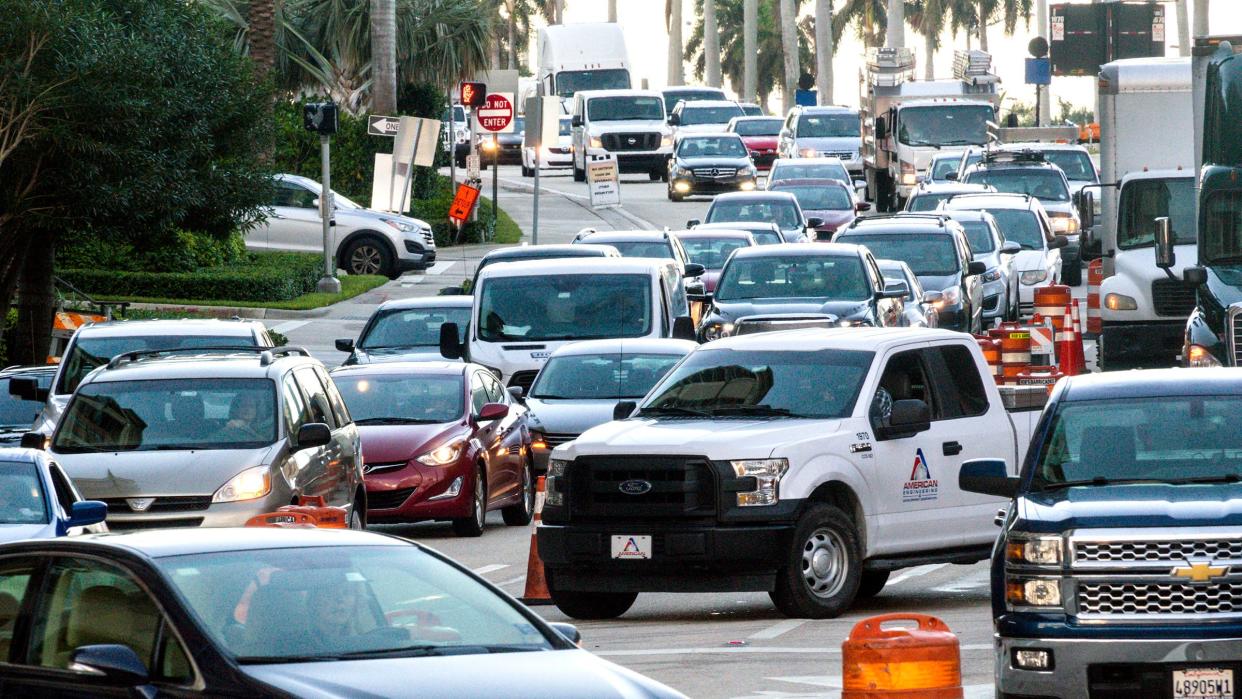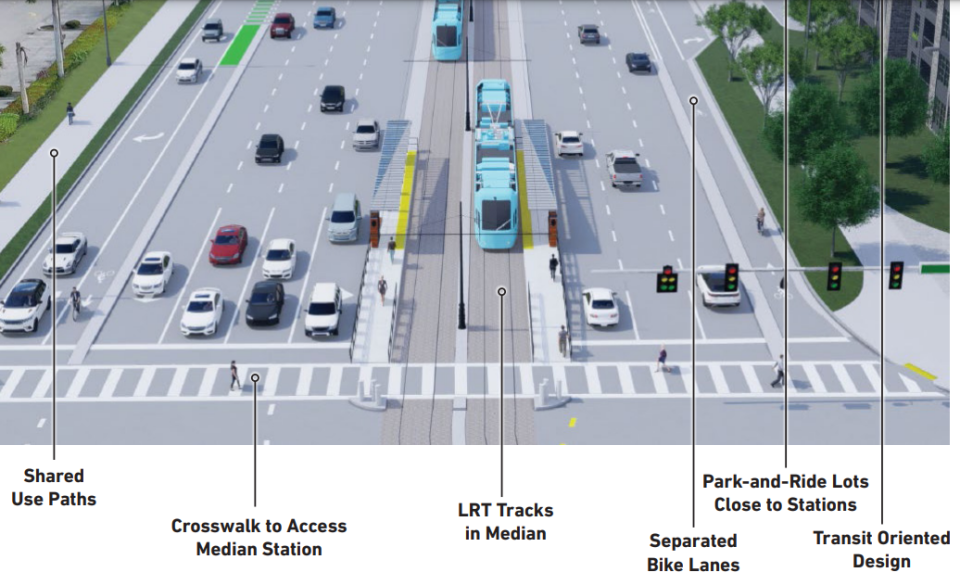Editorial: Make light rail part of the answer to traffic congestion in Palm Beach County

We've gotten a break from traffic during the COVID-19 pandemic but cars are coming back to our roads. A combination of downtown office construction and unchecked westward sprawl once again promises to worsen Palm Beach County commutes year by year, even if working from home remains an option for many.
So the light rail system proposed by the Palm Beach Transportation Planning Agency (TPA) last month merits consideration — and promptly, as the technical, financial and bureaucratic tracks to approval and completion would require a decade to accomplish. By all means, let's move it along but also absorb lessons from Miami-Dade County, which is ahead of us in mass transit, but wasted many years and vast fortunes along the way.
First, a quick explainer: Light rail is mainly a tram system. As proposed here, it would start in downtown West Palm Beach, run along the Okeechobee Boulevard median to State Road 7, then hang a left to the Mall at Wellington Green. The 13-mile stretch would cost an estimated $856 million, amassed from a mix of local tax money and federal matching funds.
EDITORIAL:Gov. DeSantis' next move should be a political pivot
EDITORIAL:Gov. Ron DeSantis' inauguration speech skirts his controversies
EDITORIAL:America, the IRS is the good guy; tax cheats are the bad guys
The fair question is, why throw such a fortune at the problem and risk creating a white elephant, when you could double the size of your bus fleet, even with the world's fanciest buses, and assign dedicated travel lanes for them, and still have spent millions less?
The answer is, first and foremost, most people would rather ride a train. Palm Tran buses will always remain a needed part of an integrated transit network, because of both their relatively lower cost and route flexibility. And yes, adopting a higher quality and more speedily and frequently run fleet could help overcome the stigma that some attach to riding buses. But for the county's most densely populated and highly trafficked corridors — Okeechobee and S.R. 7 make sense for a first route — light rail could add a level of comfort and sense of reliability that could get commuters in seats and get cars off the roads.
There's another selling point, notes Valerie Neilson, TPA executive director: Establishing light rail lines would encourage redevelopment of the corridor. She points to Phoenix as an example. The city spent $2 billion for light rail, and the system generated $12 billion in redevelopment within a decade, she said. A bus line doesn't have the same impact, because its route could be shifted at a moment's notice, so a developer considering a major project along the line couldn't rely on its benefits. A train or tram line is more permanent, and creates an ideal zone for multifamily housing, shops and other infill development — which is what we want to encourage, as opposed to suburban sprawl. And let's face it, there are sections of Okeechobee and S.R. 7 that could both look better and function in a way that improves our quality of life.
More:$856 million light rail line proposed to link Wellington to downtown West Palm

Having apartments next to a mass transit line could help solve the county's affordable housing crisis — especially if a workforce housing component were required in that zone — in addition to reducing the need for those members of the workforce to commute by car.
As for the cost of light rail, the local share has an obvious funding source: When the penny sales tax addition sunsets in the next couple of years, rededicate that money to countywide transit. That's what Miami-Dade and Broward counties are doing.
There's one other piece of the picture, however, that requires serious attention: If the goal is to limit road congestion, the county commission needs to limit the westward sprawl that generates more and more of it. That's an important lesson from the counties to the south: There'll always be demand for more houses, no matter how far west into the scrubland builders are allowed to build. We need to restrain that growth, at least until we have the mass transit systems in place to accommodate it. Otherwise, why spend hundreds of millions, and even billions of dollars for trains that never catch up to the bulldozers? When will we see a county commission, state Legislature and courts with the foresight and discipline to commit to that?
This article originally appeared on Palm Beach Post: Palm Beach County light rail part of the answer to traffic congestion

